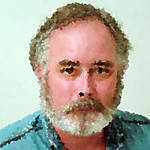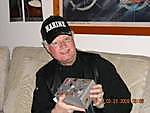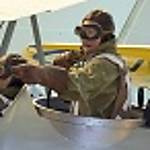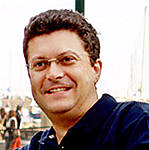Decided I needed an additional instrument panel. I could scratchbuild one, which isn't difficult but would consume more time than it was worth. Ditto for reproducing a copy from and Eduard or Roden kit from RTV and casting resin. Maybe if I needed a dozen, but not for one copy. So it was appropriate for a Silly Putty quickie.
Take the master part and white-glue it to the bottom of a container (those disposable ketchup container for french fries — I always grab a dozen when I'm lunch-slumming). The white glue keeps it from shifting and also from Silly Putty creep and is easy to clean off. Get some Silly Putty and get it nice and kneaded and goopy (I give it 10 seconds in the microwave). Dribble it on the part and keep pressing down. Allow the Silly Putty an hour or so to fill the void and level off. Then put the container in the freezer.
Freezing stiffens the Silly Putty but doesn't harden it. Pop out the putty, pry out the master part, set down the mold upside down so it levels without warping, give it a spritz with Zip Kicker then add some drops of thin-viscosity CYA.
Here are pictures of the casting in process. It's not really a sliced yam. You don't have much time before the Silly Putty warms up so don't dither.

This particular brand of Silly Putty changes color during temperature changes, so notice the heat put off by the CYA reacting to the accelerator. Add a couple more layers of CYA, hardened with Zip Kicker spritzes. If you add a layer of tissue it makes the part less fragile. A bigger part, you might add some debris that, combined with the CYA, essentially makes a composite material. Woodshavings and graphite dust from the pencil sharpener work quite well. The main thing is to keep the part from warping. When popping the cast part out of the Silly Putty, the putty will stick to it, but not as well as it sticks to itself. Dab the putty on the cast part to pull up the remaining material.
And here's the CYA casting hit with some primer and compared to the original part. Kind of messy but it can be cleaned up. And it's quick and cheap.






























